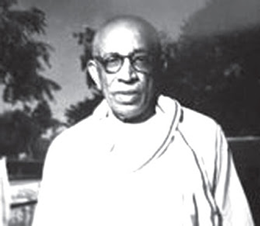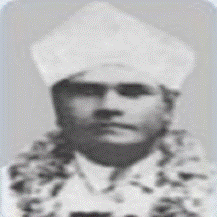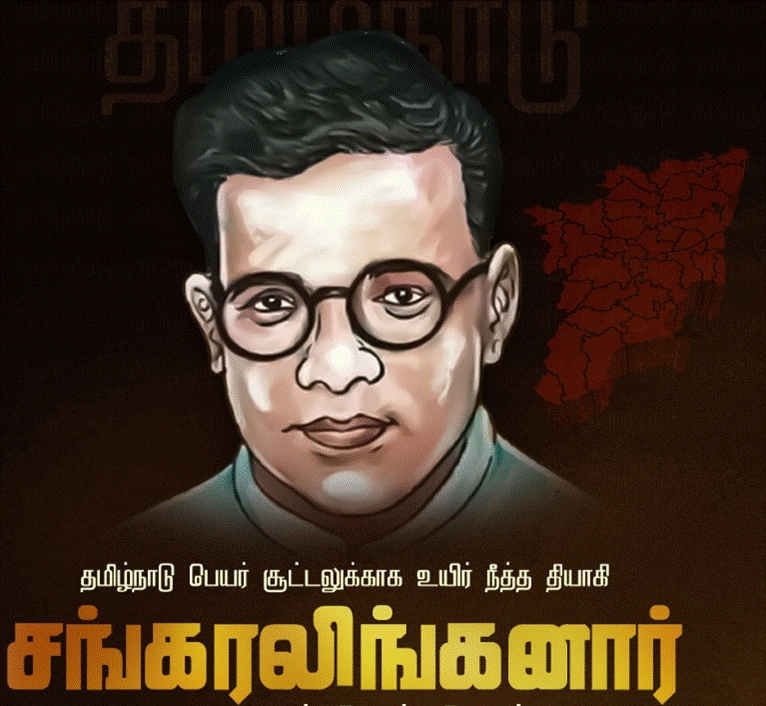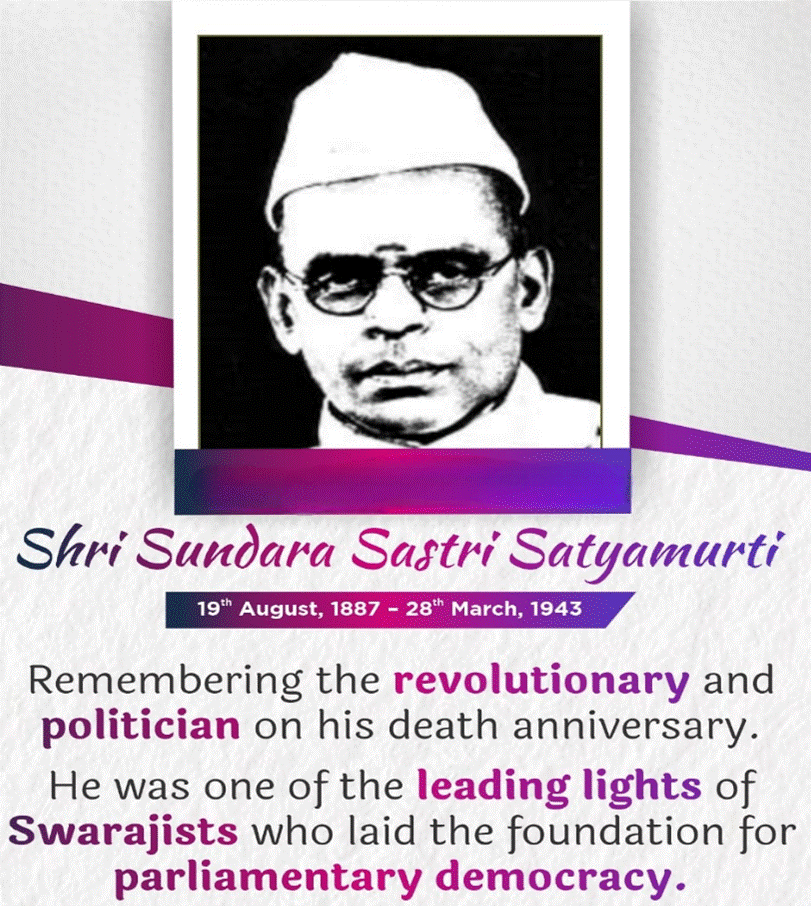PREVIOUS
Freedom Fighters from Tamil Nadu Part – 05
August 20 , 2024
246 days
5657
0
Freedom Fighters from Tamil Nadu Part – 05
(இதன் தமிழ் வடிவத்திற்கு இங்கே சொடுக்கவும்)
25. Dr. Tiruvengimalai Sesha Sundara Rajan (T.S.S. Rajan)
Early Life and Education
- Dr. Tiruvengimalai Sesha Sundara Rajan, born in 1880 in Srirangam, Madras Presidency, was educated at St. Joseph's College, Tiruchirappalli, and Royapuram Medical School, Madras.
- He pursued further studies in medicine in England, where he earned his M.R.C.S. degree in 1911.
Medical Career
- Dr. Rajan initially practiced medicine in Burma and later returned to India in 1914.
- He established his own clinic, the "Rajan Clinic" in 1923.
- His distinguished medical career included service in Burma, England, and India.
Involvement in the Indian Independence Movement
- Dr. Rajan joined the Indian National Congress in 1914 and actively participated in the independence movement.
- He was involved in the agitations against the Rowlatt Act and the Vedaranyam Salt Satyagraha.
- He served as General Secretary and President of the Tamil Nadu Congress Committee and was a member of the Imperial Legislative Council from 1934 to 1936.
- He also coordinated activities for the Khilafat Committee and led the Tamil Nadu branch of the Harijan Sevak Sangh from 1932 to 1935.
Political Career
- Dr. Rajan was appointed as Minister of Public Health and Religious Endowments in the Madras Presidency from 1937 to 1939 under C. Rajagopalachari.
- In 1946, he was appointed Minister of Food and Public Health when Tanguturi Prakasam became Premier.
- He continued in this role until 1951.
- In 1948, Dr. Rajan attended the Thiruvallur Taluk Agricultural Conference, where he unveiled a portrait of C. Rajagopalachari.
Death
- He had a brief illness and underwent an operation for appendicitis, but he died on 14 December 1953 at the age of 73.

26. S. P. Y. Surendranath Arya
Early Life
- S. P. Y. Surendranath Arya, originally named Ethiraj, was born to Dhanakoti Raju Naidu in a Telugu-speaking family in Madras.
- After completing his initial education, he became involved in extremist political activities.
- He moved to Bengal in 1897, where he connected with Bengali revolutionaries.
- On his return to Madras, he adopted the name "Surendranath" in honor of the Bengali revolutionary Surendranath Banerjee and began styling himself as "Arya," meaning "native of India."
Political Activism and Arrest
- In Madras, Arya developed a close relationship with Tamil revolutionary Subramanya Bharathi and co-founded the Chennai Jana Sangam.
- He was arrested on 18th August 1908 on charges of sedition and sentenced to 11 years of transportation.
- During his trial, Arya is reported to have made a provocative statement about the foreign presence in India.
Imprisonment and Conversion
- Arya served six years of rigorous imprisonment in Bellary before his release in 1914.
- During his time in prison, he contracted leprosy.
- Danish Christian missionaries treated him, and in gratitude, he converted to Christianity.
- He later pursued further studies in the United States, earning a Master of Arts degree from Grove City College in 1917.
Later Life
- Upon returning to India, Arya became a missionary for the Danish Mission Church and married a Swedish-American woman, Voegeli, whom he added to his own name.
- He was one of the few attendees at Bharathy's cremation in 1921, where he delivered a eulogy in Telugu.
- Arya later reconverted to Hinduism in the late 1920s.
- He joined the Brahmo Samaj and supported the Self-Respect Movement, becoming a close friend of Periyar E. V. Ramasami.
Legacy
- S. P. Y. Surendranath Arya's life was marked by significant transformations and contributions to both the Indian independence movement and various social reform movements.
- His journey from a revolutionary to a missionary, and then a reformist, highlights his complex and evolving role in India's socio-political landscape.

27. Thyagi Sankaralinganar
Early Life and Career
- Thyagi Sankaralinganar was born on 26 January 1895 in Manmalai Medu village near Virudhunagar, Tamil Nadu, to Karuppasamy and Valliammai.
- He initially started a Khadi business in Paramakudi before becoming deeply involved in the Indian independence movement.
Participation in the Independence Movement
- In 1917, Sankaralinganar joined the Indian National Congress and became actively involved in the struggle for independence.
- At the request of C. Rajagopalachari, he left his business to join the Gandhi Ashram in Tiruchengode.
- In 1930, he took part in the Salt March led by Mahatma Gandhi from Ahmedabad to Dandi and accompanied Gandhi during his visit to Virudhunagar in 1933.
Later Activism and Hunger Strike
- Sankaralinganar was committed to various social causes and continued his activism post-independence.
- In 1952, he donated his two houses to establish a girls' school and provided funds for student meals.
- In 1956, during a period of political agitation for the renaming of Madras State to Tamil Nadu, Sankaralinganar initiated a hunger strike on 27 July 1956.
- His 12-point agenda included demands for renaming Madras State, electoral reforms, and alcohol prohibition.
- Despite pleas from leaders like C. N. Annadurai, M. P. Sivagnanam, and Jeevanandham to end his fast, Sankaralinganar continued his protest.
Death and Legacy
- After 76 days of fasting, Sankaralinganar's health deteriorated, and he was hospitalized in Madurai.
- He passed away on 13 October 1956.
- His relentless activism for renaming the state was eventually realized when the DMK government changed the name to Tamil Nadu in 1967, and the Union government formalized it in 1968.
- In 2015, the Tamil Nadu Government honored his memory by building a memorial in Virudhunagar.

28. Sundara Sastri Satyamurti
Early Life and Education
- Sundara Sastri Satyamurti was born on 19 August 1887 in Thirumayam, Pudukkottai State.
- He was a diligent student, attending Maharajah's College, Madras Christian College, and Madras Law College.
- After practicing law, he ventured into politics following encouragement from S. Srinivasa Iyengar, a prominent lawyer and politician who became his mentor.
Political Career
- Satyamurti was an influential leader in the Indian National Congress from the Madras Presidency, alongside notable figures like S. Srinivasa Iyengar, C. Rajagopalachari, and T. Prakasam.
- He was known for his eloquence and played a significant role in Indian politics:
- Protests and Movements: Satyamurti actively participated in protests against the Partition of Bengal, the Rowlatt Act, the Jallianwala Bagh massacre, and the Simon Commission.
- Leadership Roles: He served as the President of the provincial wing of the Swaraj Party (1930-1934) and the Tamil Nadu Congress Committee (1936-1939).
- He was a member of the Imperial Legislative Council from 1934 to 1940 and served as the Mayor of Madras from 1939 to 1943.
Contributions and Legacy
- Advocacy:
- Satyamurti was known for his opposition to caste discrimination and his belief in racial, communal, and religious harmony.
- He was also an advocate for constitutional government and parliamentary democracy.
- Infrastructure Development:
- As Mayor of Madras, he played a crucial role in addressing the city's water scarcity issues during World War II, leading to the construction of the Poondi Reservoir.
- Mentorship:
- He is regarded as the mentor of K. Kamaraj, who became the Chief Minister of Madras State (1954-1963).
- In honor of his contributions, the Poondi Reservoir was named after him, and the Tamil Nadu Congress Committee headquarters is named Satyamurti Bhavan.
- Cultural Contributions:
- Satyamurti supported the revival of Bharata Natyam and was involved in the establishment of the Music Academy of Madras.
- He was also an accomplished stage actor and served as President of South Indian Film Chambers and the All-India Motion Picture Congress.
Arrests during struggle and Death
- Satyamurti was arrested multiple times for his political activities, including during the Quit India Movement of 1942.
- He was imprisoned in Amravathi Jail and suffered with spinal injury.
- He died on 28 March 1943 due to complications from his injuries.
Honors
- A stamp commemorating him was released in 1987.
- A statue of Satyamurti was unveiled in the Parliament House on 1 October 2002, by A.P.J. Abdul Kalam, donated by former Union minister Subramanian Swamy.

Leave a Reply
Your Comment is awaiting moderation.


